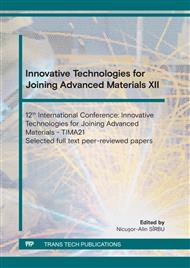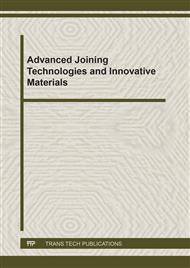p.1
p.9
p.15
p.25
p.35
p.45
p.51
p.57
New Results Regarding the Cavitation Destruction Behavior of Heat-Treated CuZn39Pb3 Brass with Different Parameters
Abstract:
Among other parts made of brass there are also the blades and the rotors of the hydraulic machines, respectively ship propellers, which during operation are degraded by cavitation erosion. As a result, most of the researches, including the most recent ones, are focused on the morphological analysis of structures eroded under the impact of micro-jets and shock waves, produced by cavitation hydrodynamics. The goal is to create new materials, but also to use new treatment technologies to increase cavitation resistance. As the literature is quite poor in studies related to the materials resistance to cavitation erosion, respectively treatments and technological procedures of it’s improvement, this paper presents the research results on the behavior of vibration cavitation erosion, carried out on three sets of CuZn39Pb3 brass samples, subjected to volumetric heat treatments of hardening for putting in solution at 800°C, followed by tempering at 250°C, 400°C and 600°C. The characterization of the behavior and the cavitation resistance of the structures resulting from the applied heat treatments is performed based on macroscopic images, taken at different representative periods, SEM images at the end of the test duration and values of specific parameters recommended by ASTM G32-2016. The analysis highlights the differences caused by the change in structure by varying the temperature, but also the hardness of the surface exposed to the cavity. Thus, of the three treatments, it is found that the best resistance to cavitation is conferred by the structure resulting from hardening at 800°C, with tempering at 250°C.
Info:
Periodical:
Pages:
1-8
Citation:
Online since:
June 2022
Price:
Сopyright:
© 2022 Trans Tech Publications Ltd. All Rights Reserved
Share:
Citation:



